

Are you fascinated by hunting and wondering how to choose a rifle scope? First, let us learn some information about this device. A rifle scope is a piece of optomechanical equipment that is placed on the top of a weapon. Shooters use this optical sighting device to aim the target carefully at shot accuracy. With Rifle scope, just fixing the reticle is required to hit the target. It is extremely easy to learn to shoot the aimed spot with a scope rather. Since most rifle scopes also amplify and zoom, the aiming point looks closer, facilitating you to install a specific shot directly hitting the target. Rifle Scope is imperative for any dedicated shooter or a hunter, but it can be complicated to pick the best one with so many scopes on the market. If you are questioning how to choose a rifle scope, do not worry! We have some tips for you to choose the rifle scope.
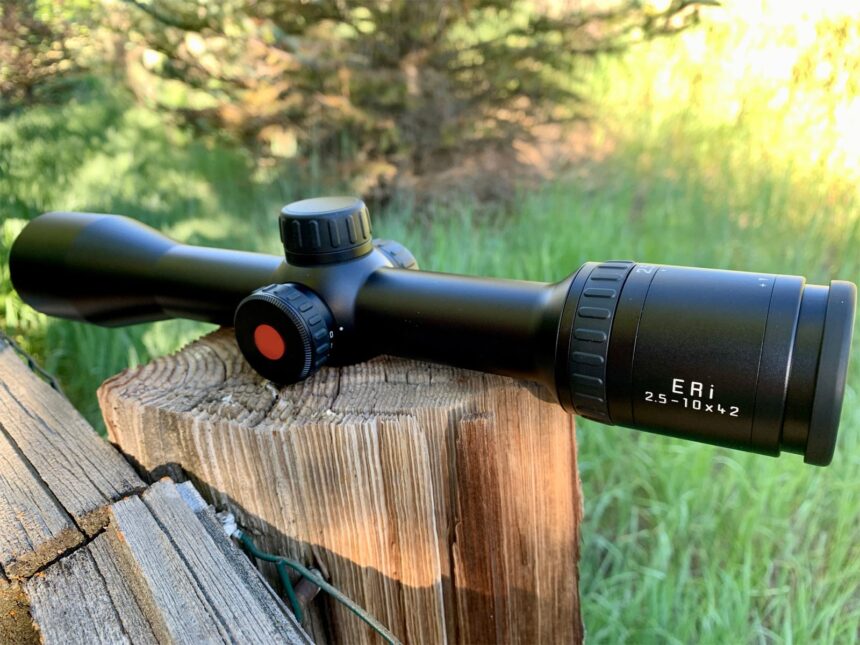
A rifle scope is one of the most useful tools for the hunters and pursuant that help them in aiming and targeting precisely. According to the mentions on Wikipedia Trusted Source Telescopic sight - Wikipedia A telescopic sight, commonly called a scope for short, is an optical sighting device based on a refracting telescope en.wikipedia.org , this equipment works like a telescope and gives a clear image of your target due to the presence of an objective lens.
On the rear side of a rifle scope, there is an ocular lens, while on the front side, an objective lens is placed. With the application of these lenses, the rifle scope provides a very clear picture noticeable to the shooter. To get the extreme precision in the central point (focus), there lies a focus lens behind the front (objective) lens.
If you are looking for a rifle scope that is ideal for hunting or tactical operations and near to medium range, the Vortex Crossfire II 3-9x40mm Rifle Scope will be a helpful option. This rifle scope features professional-grade optics to make it especially well-suited to low-light conditions. Constructed by using fully multi-coated optics and a changeable zoom of 3x to 9x, this scope from Vortex accouches amazingly sharp pictures at any range, in virtually any brightness or dullness condition.
Do not blame your fate if you keep missing the targets; your game is in your hands, just as the destiny inscribed on your palms. Grab the sturdiest rifle scope and dive into the world of the wilderness without the fears of beasts. Choose the affordable and cheap rifle scope for your baby steps in the field of hunting.
Using or carrying a rifle scope is a great approach to have quality time. There are thousands of rifle scopes with distinctive characteristics and traits, making us think of how to choose a rifle scope. However, if you are looking for the best rifle scope, there are some factors that you should take into considerations.
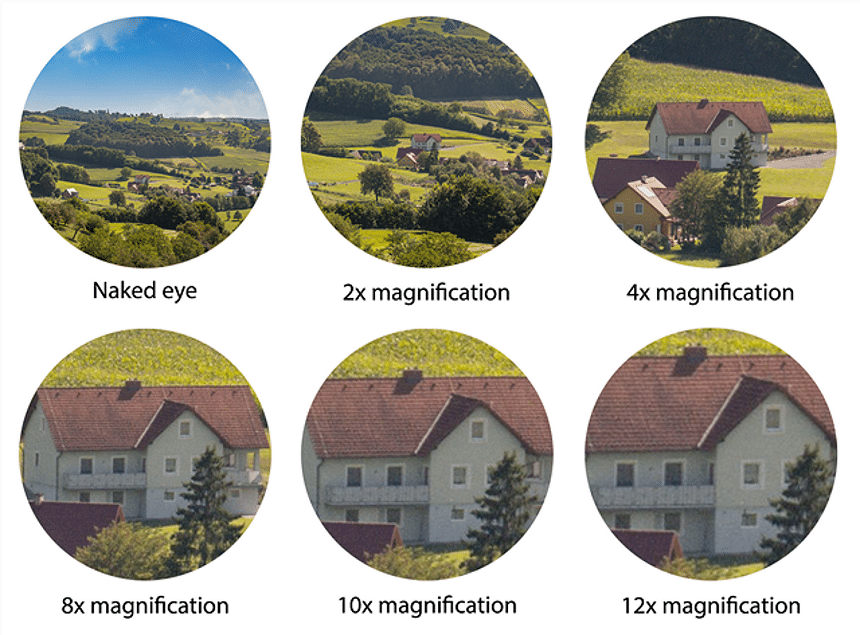
It is very crucial to determine the magnification of your tool before using it. If the magnification is too high, then you will have a diminutive range of view, and that is not an ideal case. At initial levels, the hunters assume that magnifying the range of viewpoint 10x will make shooting more manageable; however, your range of sight will be bouncing around so much as you breathe or your heartbeats. Even a small tremble in your scope can be interpreted as a bullet’s trajectory 300 arm-span downrange.
Before getting a rifle scope, make sure that it is adjustable and can provide different views and sights as per your requirement. If the magnitude is too big, it will occupy the spectacle with just your target alone. You need to refocus if you need a clear picture of the target. Bushnell 4.5-18×40 Riflescope with DZ 223 Reticle features 4.5-18x magnification scope for long to mid-range shooting, and it is one of the best rifle scopes in terms of magnification. The best part about this rifle scope is that it allows an adjustable extensiveness throw lever for swift magnification, and you can even adjust it even while donning gauntlets.
By depending excessively on magnifying your target to receive a great shot, you can negatively influence your range of view. So, when it comes to trial scopes, control and accuracy ensure to grab a rifle scope that features a variety of magnifications.
If you are buying a rifle scope for competition, then ensure to understand the level of range you will be fighting with and what will be the greatest range that you will be hunting at those limits.
As rifle scopes are known to have a “light-gathering ability,” there is little to no truth in this jargon. In reality, scopes do not collect light, but they transmit the available light. A rifle scope can provide a theoretical 98% of light transmission, but it can only be executed by extremely costly scopes. Most rifle scopes feature about 90% of light transmission. However, anything above 95% is perfect for you, and for beginners, even the range between 90% to 95% will work simply fine. You must apply light transmission numerals extremely carefully to reach an accurate point. The makers of rifle scopes estimate light transmission distinctively, based on particular wavelengths to increase their numbers. The bigger magnification you hold, the more limited light you get to your eyepiece. The more extensive the objective lens, the more you get through your eyepiece.
When it comes to the ideal light transmission from a rifle scope, nothing can beat the Vortex Crossfire II Trusted Source Vortex Crossfire II 3-9x40mm Rifle Scope | Up to 25% Off 4.7 Star Rating w/ Free S&H Shop Vortex Crossfire II 3-9x40mm Rifle Scope | Up to 25% Off 4.7 Star Rating on 125 Reviews for Vortex Crossfire II 3-9x40mm Rifle Scope Free 2 Day Shipping + Free Shipping over $49. www.opticsplanet.com formed with fully multi-coated optics and a fitful zoom of 3x to 9x. The rifle scopes from Vortex deliver amazingly illuminated pictures at any range, in almost any brightness situation. As the equipment is tried and tested by us, we were very much impressed with the execution of light transmission.
It is essential to analyze the effectiveness of transmission light to get a transparent image of your target. Make sure that the transmission light is exactly how you need it for the specific conditions.
To hunt different animals, you are required to get a rifle scope with specific magnification. To hunt whitetail deer, the standard magnification range for a gun should be between 3-9. For hunting mule deer or antelope in the western states, a 4-12 or 4.4-14 is used as a standard magnificence range. While using a rifle in the barren area’s plains or open sights, the magnificence range can be more high depending on the distance and moving pace of the target. Opportunities are always hiding for the hunters in the shape of moving animals, so keep your rifle scope prepared with adjusted magnificence beforehand. Let us talk about the excellence of the rifle scope that might help you in choosing your equipment. The Vortex Crossfire II holds a comparable construction to more costly alternatives in Vortex’s range of scopes. It carries a magnification capability that is extremely beneficial for small to medium range targets. The strengths prevail within 2x and 7x, and this is powered by a 32mm objective lens. Hence, it rests in an ideal range of magnification to help you shoot aims up to a thousand yards away.
If you target your aim from the top of the hill or a mountain, then the range of magnificence will be at the highest to hit the target precisely. To reach the target from long-range, usually a 6-20x or 8-25x variable scope does not have substantial strength. However, drastically hot weather involving mirage and heatwaves can make a high-power scope nearly unusable.
For simple and straightforward usage, many hunters go with a fixed power scope so that everything remains in one arrangement and they can shoot easily. The fixed rifle comes with variations of magnificence settings; for instance, squirrel rifles feature a .22s magnification setting. In comparison, the maximum magnificence of a rifle scope can go up to 24, 36, or 40 power.
A 2x magnificence range is normally utilized for a handgun in a rifle scope. The higher magnification you hold, the more troublesome it is to obtain your view image and objective. Moreover, such a setting makes it very difficult for your eyes to get even the slightest relief. Igniting a handgun with a scope needs loads of training, particularly with the magnificence above 2x. Higher powered variable ranges are surprisingly excellent for the expert hunters and are employed nearly particularly from a reclined posture.
Now we will discuss objective lens ranges for the rifle scope. The standard objective lens will measure between 40 to 44mm on a medium adaptable rifle range. It is contemporary these days to hold substantial objective lenses of 50, 56, or even 75mm and increased in a few cases. However, these sizes are not considered as suitable for a rifle scope.
Using huge objective lenses can help in transmitting more light than smaller objective lenses. Nevertheless, small-sized objective lenses can render the highest power in the darkest situations with increased comfort and ease of eye adjustment. Employing a smaller objective lens with a suitably set scope enables the shooter to close eyes, easily shoulder the gun with a precise, constant stock weld. A stock weld is a stable but relaxed and repeatable state of your head on the gunstock. A smaller size objective lens also helps keep the eyes open and see undeviatingly into the core of your scope every time.
Utilizing larger objective lenses does not provide the comfort and ease in viewing the target as the ring height is needed to maintain such a wide lens off your rifle sheath. In few instances, the size of the scope is so extensive that it entails such great mounting that just your chin reaches the rifle stock. However, you can grab a Bushnell 4.5-18×40 Riflescope, which comes with 3.7 inches of eye relief. This scope is harmonious with a rifle and will assist you in shooting without any disturbance.
Larger rifle scopes are more massive, awkward, heavy, wobbly to hold, hindered, and less easy to fire. Some larger-sized rifle scopes are even heavier than the actual weapon, weighing up to an unimaginable 3.5 pounds. While reading such a massive figure may intrigue you, carrying such a heavy scope is not less than pulling a cycle wagon or lifting a freight of a corpse not even annihilated by you.
From our personal experience, we can undoubtedly say that Vortex Crossfire II Rifle Scope is exemplary for shooting at close to medium range, including its professional-grade optics, make it especially well-suited to low-light conditions. The Vortex Crossfire II uses capped windage and altitude watchtowers that can be instantly reset to zero for extremely continual shots.
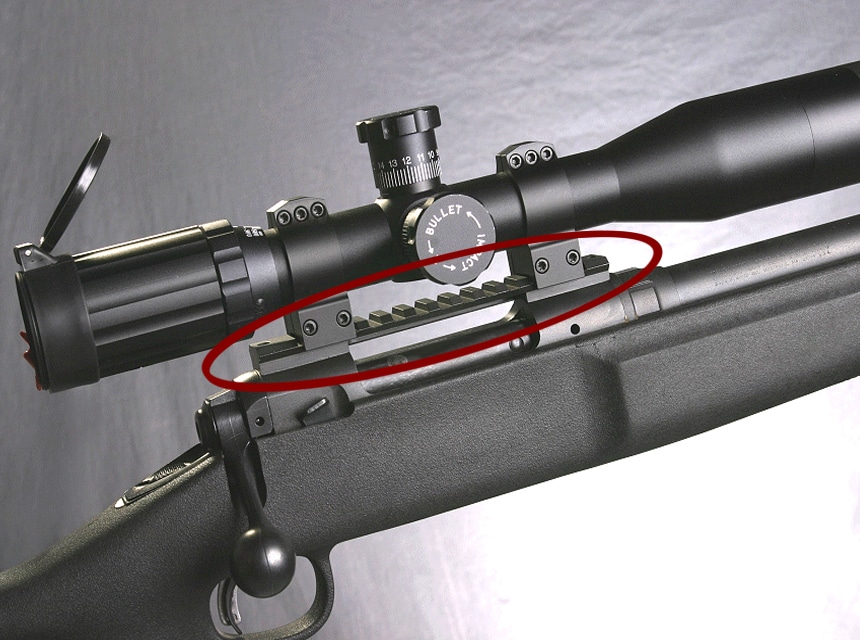
Usually, a rifle scope (more particularly in America) features central tubes that are 1 inch in diameter. The size of diameter signifies that the scope uses 1in rings. However, few rifle scopes have 30mm main tubes and thus exhibit 30mm rings. There are various principal sorts of posts that are utilized to embed the rings into the firearm. It is vital to understand the type of base required by your equipment to get the specific type of rings (1mm – 30mm) for your rifle scope. The size measures in the height of the rings are circumscribed principally by the actual lens diameter. However, measuring the barrel width, action estimation and model, ocular bell width, and bolt mounting is crucial to choose scope mounts, rings, and bases.
The best rifle scopes are the one that features waterproof coating. Most scopes are fog proof and waterproof. As the lens is one of the major components, getting a scope with lens coating is always preferable. However, ensure that the lens coating does not compromise the quality. Getting a single coated lens is ideal if you are worried about unclarity insight; otherwise, shooters usually apply multiple coatings to secure the rifle scope. The coating also depends on the quality of the glass—the pricing of coatings ranges as per quality, material, endurance, versatility, and sometimes texture.
Before buying a scope, make sure about the coatings, as these protective layers of panels help in preventing glare and collapse of light because of the reflectiveness. Guardian.com Trusted Source The business of war gets a friendlier face | Marketing & PR | The Guardian It can’t be easy to come up with a logo that sells the “war on terror”. It emerged last week that the CIA had taken inspiration from the 80s film Ghostbusters for a logo used at its counter- terrorism centre in Virginia. www.theguardian.com stated that good quality films used for coating usually cause more excellent light transmission and more explicit execution of images. The coatings should be scratch-resistant so that they stay for long-spun.
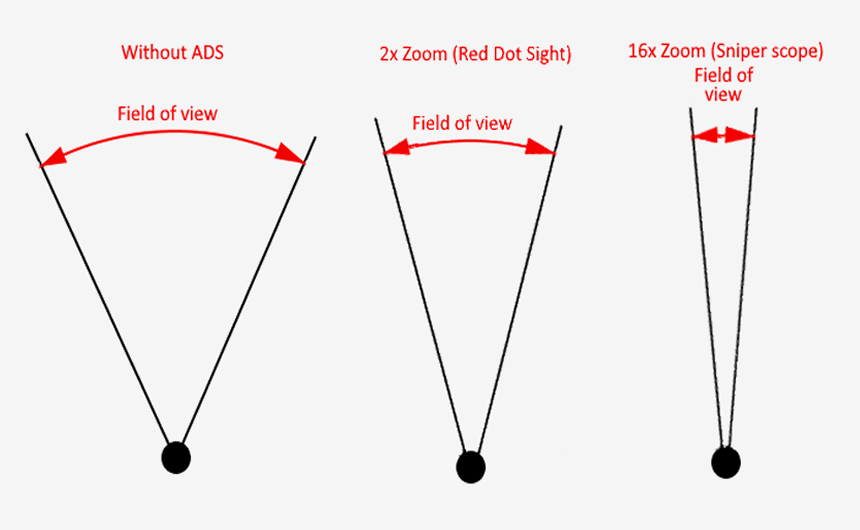
Field of view (FOV) can be calculated in feet at 100 yards. Range of Sight of a Rifle Scope is an area of sight you can view by using your rifle scope. This area or dimension includes the sight of right to left at that range. The FOV is indirectly proportional to the magnification, which means if magnificence is extended, FOV goes below, and vice versa. This can be effortlessly illustrated through an example, a standard 3x fickle scope might hold a FOV at 100 yards of a bit above 30 feet, and at 9x, the FOV shall be approximately 14 feet. However, using a larger objective lens size will not alter the calculated factual figures. Field of view mostly relies on the construction of the lens equipped by your rifle scope.
Tactical Rifle Scopes referred to the weapon that is using laser, flashlight, red dot, and rifle scope. Military officials most commonly use tactical rifle scopes, but now civilians also enjoy the experience with weapons. These weapons feature extremely high magnifications that can be measured and even go beyond an extensive 40 power scope with an unbelievable 75mm objective lens scaling in at hefty pounds.
Surprisingly, the army officials utilize the highest quality fixed 10x scopes most often. However, using these scopes required proper measures, including the team of two officials taking estimates using scientific calculators. These precautions are taken to calculate the exact mass of their target along with calculated distance and ranges.
Nearly all mil-dot considerations are necessitated with scopes at their highest potential. Scopes with fixed power reduce miscalculations by begetting a range adjusted at below than its highest power.
The “mil” in mil-dot is referred to as the milliradian, which can be defined as a factor of computation, and is approximately 3.6 inches at 100 yards.
Variable scopes are usually equipped by stateside law enforcement agencies. These armaments are made of superior quality. The official prefers variable scopes over mil-dot reticles as they weld the field of view. Additionally, during the most distant shots, evaluation with a reticle is never needed.
If we talk about the Mil-dot reticles, they do not serve the purpose and are very expensive, most often owned to enhance the weaponry assemblage by enthusiasts just out of a hobby. However, some shooters use mil-dot reticles to determine hold-over at intervals, particularly for prairie dogs or plinking, or merely because the hunters love experimenting with novel tools. Mil-dot comes with the reticles that layers or coats (cover) most of the target than what is required. However, if you are intrigued by the appearance of the tool or want to join the “cool shooters,” then give it a try. Get your hands on some of the best scopes by learning some useful tips.
Repeatable scopes most often deliver supreme quality. You can determine the feature by setting the elevation and windage indicators for a period of collision at one frame, then roll them throughout and rake in different areas. Turn it back to the starting adjustments, and you will get the same point of impact as it was when you commenced.
If a scope features good quality, it will further shift the point of influence when you customize your controls. As per BBC Trusted Source The US Army is testing a “smart rifle” technology designed to improve the accuracy of shots. www.bbc.com , in simplified words, if you turn or change your dial-up elevations up to two to three inches, the spot of impact should promptly speculate that shift. However, this function is only practical in best rifle scopes, and more inferior quality scopes will require shooting several times initially to “settle in” the scope’s regional adjustments. Shooters sometimes “tap” on their scope using a coin or cartridge cover to assist this process. “Shooting a box” is an immeasurable analysis of repeatability.
But repeatability is not that important in many scopes. Generally, you will sight in a rifle and leave it alone except for minor adjustments required due to changes in ammunition type. If you have a .22 and just want an inexpensive scope to top it off, you will generally be fine without absolute repeatability, which increases the price of the product.
For using the rifle scope and shooting the target, some customized adjustments are required. The adjustments on the scope are set in “Minutes of Angle” (MOA). This is a mere bit of computation of a circle and is 1.0472 at 100 yards. For all functional persistence, it is termed 1 inch at 100 yards. The adjustments of 2 inches at 200 yards, 5 inches at 500 yards, one-half inch at 50 yards, etc.
Example of a rifle scope turret with MOA adjustments
Rifle scope contains several components, including the turrets, which are placed in the middle of the scope tube in a protrusion called the turret housing. The turrets are seldom arranged to be adjusted with a coin, and thus they are finger adaptable. These turrets are usually exaggerated, and the ticks are viewed and considered. Turrets are only used in a setting where there is a surety that nothing will bang around or snag on a sprocket or brush. That is the reason why hunting scopes don’t possess target turrets, and alternatively, they are much cheaper.
The turret features caps that are usually with an “O” ring and support in blocking condensation and detritus from invading the range through its most exposed gears. Several scopes have big controls, although even with locking fittings, to limit the accidental inclination.
Bullet drop compensation scopes utilize a special reticle design to show how far ammunition drop across a provided range. As we view by scope, the reticle produces various targeting points that are accumulated below the main crosshair. BDC dials and reticles are usually set to determine the cartridges, such as 5.56 (223) 55 grain and 62 grain, or 7.62 (308) 168 grain, and are highly questionable with regard to exactitude. Climatic requirements are different, though the BDC controls are still the same despite cartridge speed, bullet BC (ballistic coefficient), heat, barrel diameter, or altitude. However, the estimation using this feature is usually incorrect, so it is not practiced in real-time.
Are you looking for simple yet efficient rifle scope to help you in targeting with precision? Bushnell AR Optics 4.5-18×40 Rifle scope is the most consummate option for long-range hunters. The equipment comes with a large 4.5-18x magnification range to provide some exceptional images of the target. Are you longing to experience the usage of turrets? Your wish is regarded! The rifle scope features target turrets and side parallax centers for specific arrangements. Bushnell AR Optics 4.5-18×40 Riflescope features the Drop Zone 223 Reticle for ideal execution.
With the development and advancements of weapons, shooting techniques, and demands, the functionality of rifle scope is also reaching the level of perfection. With so many options in the market, shooters often stay confused about how to choose a rifle scope that will accommodate them perfectly. One of the biggest constraints in buying a rifle scope is the cost. However, you can explore helpful tips to choose a rifle scope at low prices and grab one at low costs.
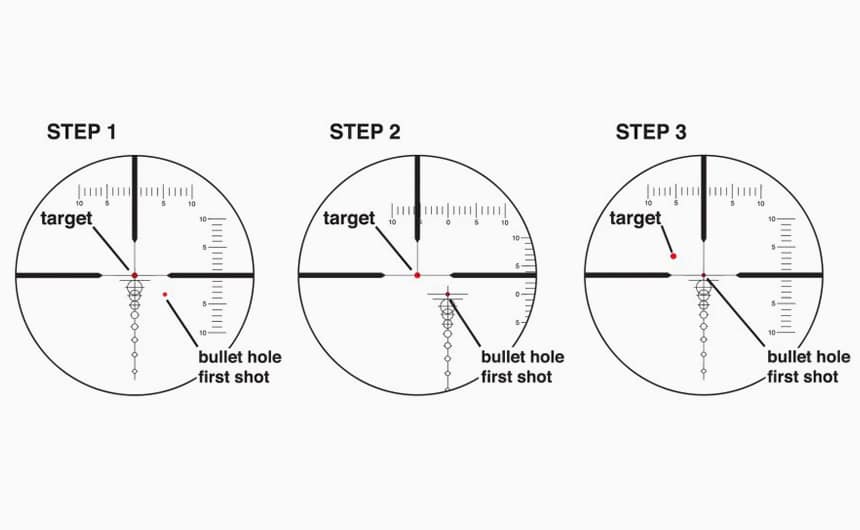
It is especially important to set the sight of your scope precisely by mounting it in a proper manner. Use a bore sighter to get close enough to imprint a bullet chamber on a massive target at 50 yards. If your scope lacks a boresight, you can use the equipped laser to view your target and sight the aiming point. To adjust the sight, ensure the spot where you want to release the bullets and fix the view accordingly. All guns exhibit an array of attributes, and thus they have unique serial numbers. The bullets shot by your rifle can identify the weapon by matching serial numbers; that is what tech advancement is all about.
If you use a high-quality rifle scope with an ideal choice of the gun along with exceptional rings and bases, with a particular sort of bullet that assists your prospects well, you will never miss the target. However, be certain to seize your hands on the best scopes. Learn how to choose a rifle scope to win your hunting game.
Hunting and shooting are increasing with every passing day that is causing a rise in the demand for rifle scopes. With the manufacturing of thousands of tools, it gets difficult to select the most suitable one. Most shooters and hunters get confused about how to choose a rifle scope. While this amazing equipment can make or break your hunting trip, the essential part is to understand how to choose a rifle scope to help you in attaining the target without any hassle.
We have mentioned all the tips, details, features, and even minor in-depth information to help you select the best rifle scope. Getting a scope with your weapon can help you in viewing the target clearly and shoot to exactly hit the aiming spot. The rifle scopes come in various features, including magnificence range, control options, lens quality, and sturdiness of the tool. Our guide will be helpful for you in choosing the most suitable rifle scope of your choice as per your gun type, shooting requirement, and the temperature you are working in. So, grab the best rifle scope, and start hunting for the beasts before the beasts knock you down.